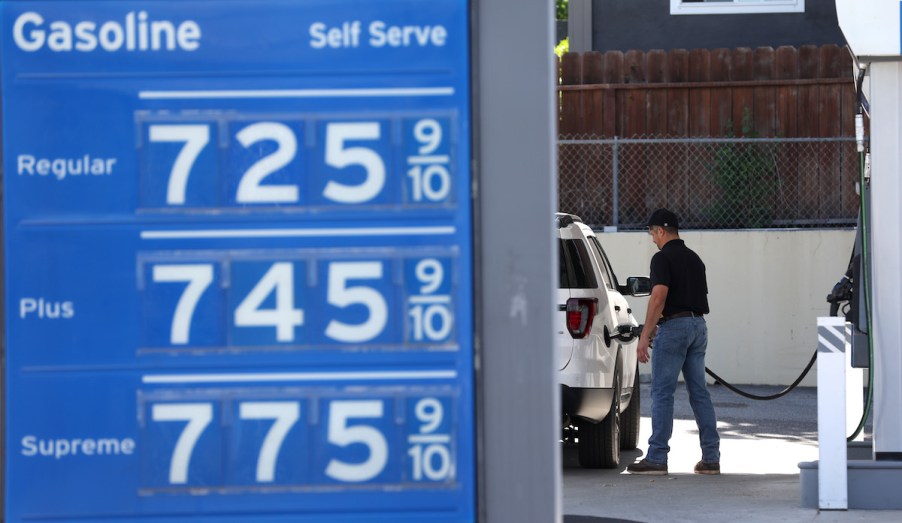
When Will Gas Prices Go Down in 2022?
Gas mileage is one of the most important factors when choosing a car, especially in today’s climate. This past March, gas prices reached a record high of $4.33 per gallon, and the national average has only gone up. Some drivers have even resorted to trading in their gas-powered cars for hybrid and electric vehicles. Even cars that typically get great fuel economy are struggling, so when can we expect gas prices to go down in 2022? Here’s what some experts have to say.
The current state of gas prices is not encouraging

The latest AAA data shows the national average hit $4.67 for the first week of June. In some states, like California, you might have to pay over $6 for a gallon of gas. Georgia is currently the cheapest place to buy gas, with an average of $4.16 per gallon.
This time last year, the national average was barely over $3 per gallon. Unfortunately, the national average is expected to remain above $4 for most (if not all) of 2022.
When will gas prices go down in 2022, and why are they still rising?
According to Kiplinger, oil demand is the primary cause of the outrageous prices we’ve seen at the pump. The oil industry was thrown for a loop in 2020, with more people staying home and using less gas. Oil was dirt-cheap that year (below $1 at one point) and some suppliers were paying people to take excess oil.
Naturally, once COVID-19 vaccines were introduced and safety measures were relaxed, people felt more comfortable buying more gas. However, the oil industry was not ready for this sudden demand for oil production. Producers are also hesitant to sink money into drilling an abundance of oil only to have another unprecedented downturn.
Energy companies are also largely against new oil production, particularly for monetary gains. These companies would rather secure bigger stock repurchases and dividends for their investors. Wall Street continues to encourage this practice today.
The emissions goals that the U.S. government set are also partially to blame. President Joe Biden aims to reduce our emissions by 50% in 2030, which is why internal combustion engine (ICE) cars might be gradually phased out afterward.
The government has also placed heavy restrictions on where energy companies are allowed to set up oil drills. Additionally, with the Keystone XL pipeline gone, Canadian oil can reach the United States only by rail. This method is more expensive, which means higher gas prices to offset the cost.
Finally, 2022 has seen the Russia-Ukraine war. Russia is of the biggest global oil producers, but many Western energy providers have shunned the country since the invasion.
In March, President Biden banned all imports of Russian oil, coal, and natural gas. Granted, the U.S. gets only about 8% of its oil from Russia, but that still means yet another hike in gas prices.
Unfortunately, experts still aren’t sure when gas prices will go down to relatively normal levels. In the worst-case scenario, it seems like the only cause for a dramatic drop would be an economic recession. All of the situations directly contributing to high gas prices probably won’t end in the near future.
They’ll probably get higher before going down
A few months ago, some analysts were hopeful that the national average wouldn’t go higher than $4.50 a gallon. That’s still true only in certain states.
According to Penn Live, experts now predict a $5-per-gallon future for the national average is entirely possible. Memorial Day weekend saw huge spikes in gas prices nationwide, which will likely only increase this summer. Brent crude oil is also selling for $120 a barrel now, up from $100 in March.


